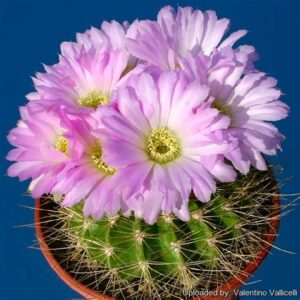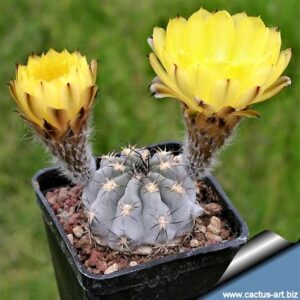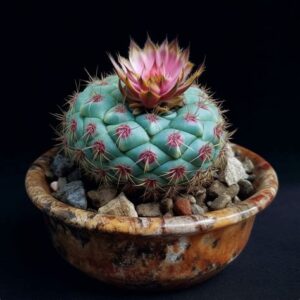The Acanthocalycium australis, often referred to as the South American Globe Cactus, is a remarkable specimen that showcases the beauty and resilience of cacti. With its vibrant blooms and unique shape, this cactus has garnered attention from collectors and gardening enthusiasts alike. In this article, we will delve into the essential care tips that will ensure your Acanthocalycium australis thrives in your home or garden.
Origins and Characteristics
Before embarking on your cactus care journey, it is essential to understand the origins and characteristics of Acanthocalycium australis. Native to the arid regions of Argentina, this cactus flourishes in conditions where many other plants cannot. Typically characterized by its spherical form and ribbed surface, Acanthocalycium australis often exhibits spine clusters that can create a spiky crown atop its body.
One of the striking features of this cactus is its ability to produce showy flowers, which blossom in a stunning range of colors, including pink, yellow, and white. These flowers generally emerge in late spring or early summer, adding a delightful pop of color to the otherwise muted tones of desert landscapes.
Ideal Growing Conditions
Creating an optimal environment for your Acanthocalycium australis is crucial for its health and vibrancy. A few factors to consider include light, temperature, soil, and humidity.
Light Requirements
Acanthocalycium australis requires bright, indirect sunlight to thrive. While it can tolerate direct sunlight, especially in the morning, prolonged exposure during the intense afternoon sun can lead to sunburned skin. Ideally, placing your cactus near a south-facing window is beneficial, as this will ensure it receives ample natural light. If you notice its growth slowing down or the plant leaning towards the light source, you may need to adjust its position to ensure even exposure.
Temperature Considerations
This species is relatively tolerant of temperature fluctuations but thrives in warm conditions. The ideal temperature range for Acanthocalycium australis lies between 70°F to 85°F (21°C to 29°C) during the day. At night, temperatures can drop slightly but should not fall below 50°F (10°C) to avoid stressing the plant. During colder months, it is advisable to bring the cactus indoors if outdoor temperatures plummet.
Soil Composition
The importance of soil quality and composition cannot be overstated when it comes to growing Acanthocalycium australis. This cactus prefers well-draining soil that mimics its arid native habitat. A suitable potting mix would consist of a combination of potting soil, sand, and perlite or pumice. This mixture promotes drainage while retaining enough moisture for the cactus to absorb. Avoid using dense soils, as they can lead to root rot.
Humidity Levels
Acanthocalycium australis flourishes in low to moderate humidity levels. Excessive humidity may lead to fungal infections or rot. Therefore, it is best to keep your cactus in a dry indoor environment. If your home is particularly humid, introducing a fan to circulate air around the plant or employing a dehumidifier can help maintain optimal conditions.
Watering Technique
Watering is a fundamental aspect of cactus care, and Acanthocalycium australis is no exception. Underwatering is preferable to overwatering, as the latter can lead to severe health issues for the plant.
During the growing season, typically from spring to early autumn, water your cactus every 2-3 weeks. Ensure that the top inch of soil is dry before applying water. If you notice a change in color or texture, pay attention to the moisture levels. When winter arrives, reduce the frequency of watering significantly, as the cactus enters a dormant state and requires minimal moisture.
Fertilization Methods
While Acanthocalycium australis does not require extensive fertilization, occasional feeding can encourage healthy growth and robust flowering. Utilize a diluted cactus fertilizer during the growing season, applying it once a month. Be cautious to follow the recommended dosage on the fertilizer package, as over-fertilization can harm the plant.
In the fall, cease fertilizing altogether to allow the cactus to rest during its dormant period. This practice will prepare your cactus for the next growing season.
Identifying and Addressing Common Pests
Mealybugs
Mealybugs are small, white, fluffy insects that can often be found clustered at the base of spines. They feed on the sap of your cactus, draining its vitality. To deal with a mealybug infestation, gently wipe the affected areas with a cotton swab dipped in rubbing alcohol. In severe cases, consider integrating insecticidal soap to eliminate them effectively.
Spider Mites
Spider mites tend to thrive in dry conditions. If you notice webbing around your cactus, this is a clear indicator of spider mite activity. Increase humidity around your cactus and introduce insecticidal soap to combat the pests. Regular misting can also help create an unfavorable environment for these mites.
Preparing for Repotting
Over time, your Acanthocalycium australis may outgrow its container, necessitating a repotting. Properly repotting your cactus ensures it continues to thrive and grow.
Choose a new pot that is slightly larger than the current one and equipped with drainage holes. Repotting is best done during the spring when the cactus is actively growing. Carefully remove the cactus from its old pot, disturbing the roots as little as possible. Place it in the new pot with fresh well-draining soil and water lightly to settle the soil around the roots. Avoid watering excessively after repotting, as the plant will be particularly vulnerable.
Propagation Techniques
For those interested in expanding their collection, Acanthocalycium australis can be propagated through offsets or seeds. Offsets, or pups, grow at the base of the parent plant and can be gently removed and replanted once they reach a few inches in height.
Seed propagation requires a little more patience and planning. Begin by preparing a seed tray with a suitable cactus mix. Scatter the seeds across the surface and provide ample light without direct sun exposure. Keeping the soil moist but not wet will encourage germination, which can take several weeks.
Regardless of how you choose to propagate your Acanthocalycium australis, patience is a virtue as growth can be gradual.
Conclusion
The Acanthocalycium australis is a visually captivating cactus that can flourish with the right care. By providing ideal growing conditions, maintaining proper watering and fertilization practices, and keeping a keen eye on potential pests, you can create an ideal environment for your cactus. Whether it becomes a focal point of your home or a cherished part of your garden, this species is sure to impress with its stunning features and remarkable resilience.





Leave a Comment